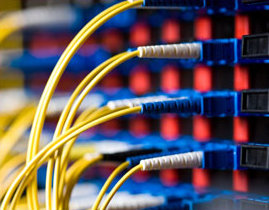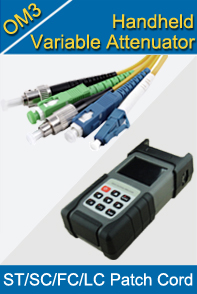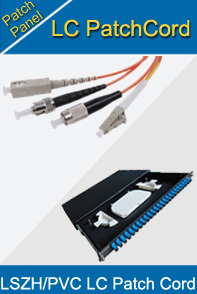-

- Sopto Home
-

- Special Topic
-

- Patch Cord Knowledge
-

- Fiber Patch Cords Must Provide High Quality Interconnection
Patch Cord Knowledge
- Fiber Optic Connector Ferrule Design
- Fiber Optic Connector Design
- E2000 to ST Fiber Patch Cable Overview
- Acceptable and Unacceptable Fiber Connector End-Face Finishes
- Using Wipes and Cleaning Cassettes to Clean Fiber Patch Cords
- Not-Too-Tight Mating of Fiber Optic Connectors
- Matching Gel and Oils Contamination about Fiber Optic Connectors
- The Effect of Improper Use of Fiber Optic Connectors
- Why Fiber Optic Connectors are Fragile?
SOPTO Special Topic
Certificate



Guarantee
Except products belongs to Bargain Shop section, all products are warranted by SOPTO only to purchasers for resale or for use in business or original equipment manufacturer, against defects in workmanship or materials under normal use (consumables, normal tear and wear excluded) for one year after date of purchase from SOPTO, unless otherwise stated...
Return Policies
Defective products will be accepted for exchange, at our discretion, within 14 days from receipt. Buyer might be requested to return the defective products to SOPTO for verification or authorized service location, as SOPTO designated, shipping costs prepaid. .....
Applications
 Fiber Patch Cords have a widely application. Where the need for the optical fiber connection, where you need fiber optic patch cords.
Fiber Patch Cords have a widely application. Where the need for the optical fiber connection, where you need fiber optic patch cords.
Testing Equipment
FTTX+ LAN
Optical Fiber CATV
Optical Communication System
Telecommunication
SOPTO Products
- Fiber Optic Transceiver Module
- High Speed Cable
- Fiber Optical Cable
- Fiber Optical Patch Cords
- Splitter CWDM DWDM
- PON Solution
- FTTH Box ODF Closure
- PCI-E Network Card
- Network Cables
- Fiber Optical Adapter
- Fiber Optical Attenuator
- Fiber Media Converter
- PDH Multiplexers
- Protocol Converter
- Digital Video Multiplexer
- Fiber Optical Tools
- Compatible
Related Products
Performance Feature
Good Water-proof
Low insertion loss;
low reflection loss;
Stability, good repeatability;
High-precision ceramic ferrule;
Compatible with NTT standard;
Precision Grinding and fully testing;
Compliance with international standards
Patch Cord Knowledge
Recommended


Fiber Patch Cords Must Provide High Quality Interconnection
Standard fiber-optic patch cords, or jumpers, are short interconnection optical cables with the same connector on each end. According to the Building Industry Consulting Service International Inc. TDM Manual, "the (fiber-optic) cable plant should be interconnected to the optical equipment through the use of optical patch cords (jumpers). This method minimizes accidental damage to the backbone.
Installers predominantly use patch cords to provide interconnection between the optical transmission equipment and the patch panel in the wiring closet; however they also use jumpers to connect one port on a patch panel to another port. Patch cords can also be used with test equipment--from the optical time-domain reflectometer or optical loss tester to the patch panel. In addition, installers are beginning to use patch cords from the last link of fiber from the horizontal cross-connect to the workstation; however, this can be costly compared to using unshielded twisted-pair patch cords.
The least common use (this may soon change) for patch cords is for workstation connectivity. Although price is an issue when choosing a fiber-optic patch cord, the type and performance of the cable-assembly connectors appear to be key factors. Most manufacturers provide all standard connector types and installers can then choose the connector type to fit the job.
Two fundamental parameters for patch cord connector performance are low insertion loss and low reflectance. When you`re dealing with light [as in fiber optics], you have a limited power budget so you want to install the highest-quality connectors possible.
As well as insertion loss, which must comply with the Electronic Industries Association/Telecommunications Industry Association standard 568, patch cord connectors should be visually inspected and optically tested.
Installation is important too, because performance can be affected by dirty connectors on patch cords. Dirt is a connector`s worst enemy. The best rule of thumb is that any time a connector is unplugged, it should be cleaned each time.
Connector type and performance are important, but what else does an installer need to know when ordering patch cords? Of course, you need to specify the fiber size and whether the optical fiber is multimode or single mode. Even with multimode fiber, we always check the fiber size, because it could be 50/125 or 100/140 microns.
But 95% of the time it is going to be 62.5/125 microns if it`s multimode. Patch cable assemblies can be simplex--typically one 3-millimeter cord that goes from point to point--or duplex--two cords molded together with a zip cord so you can separate them. A few manufacturers also offer multi-fiber or high-fiber-count optical harnesses.
Another parameter that installers need to consider is the length of patch cord required for the job. For example, from one port to another port is possibly 1 meter. When the patch panels are in a couple of racks or if a full rack is allocated to a set of patching, the length could be 2 meters.
However, if it’s a piece of electronics over to a patch panel over to a big switch room, that could be 10 meters….
For more high quality fiber optic patch cords or how to get the newest quotes, please contact a Sopto representative by calling 86-755-36946668, or by sending an email to info@sopto.com.



